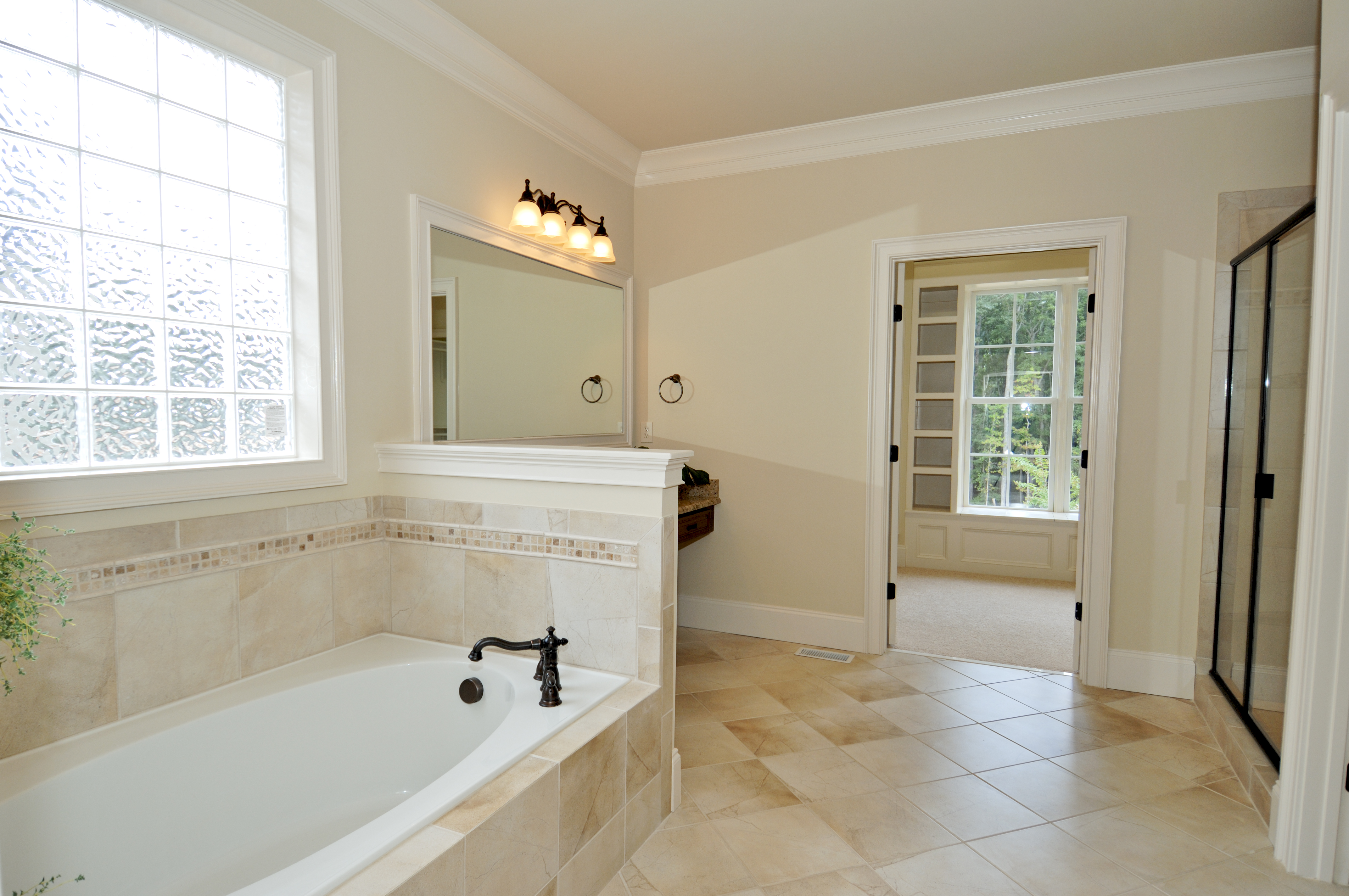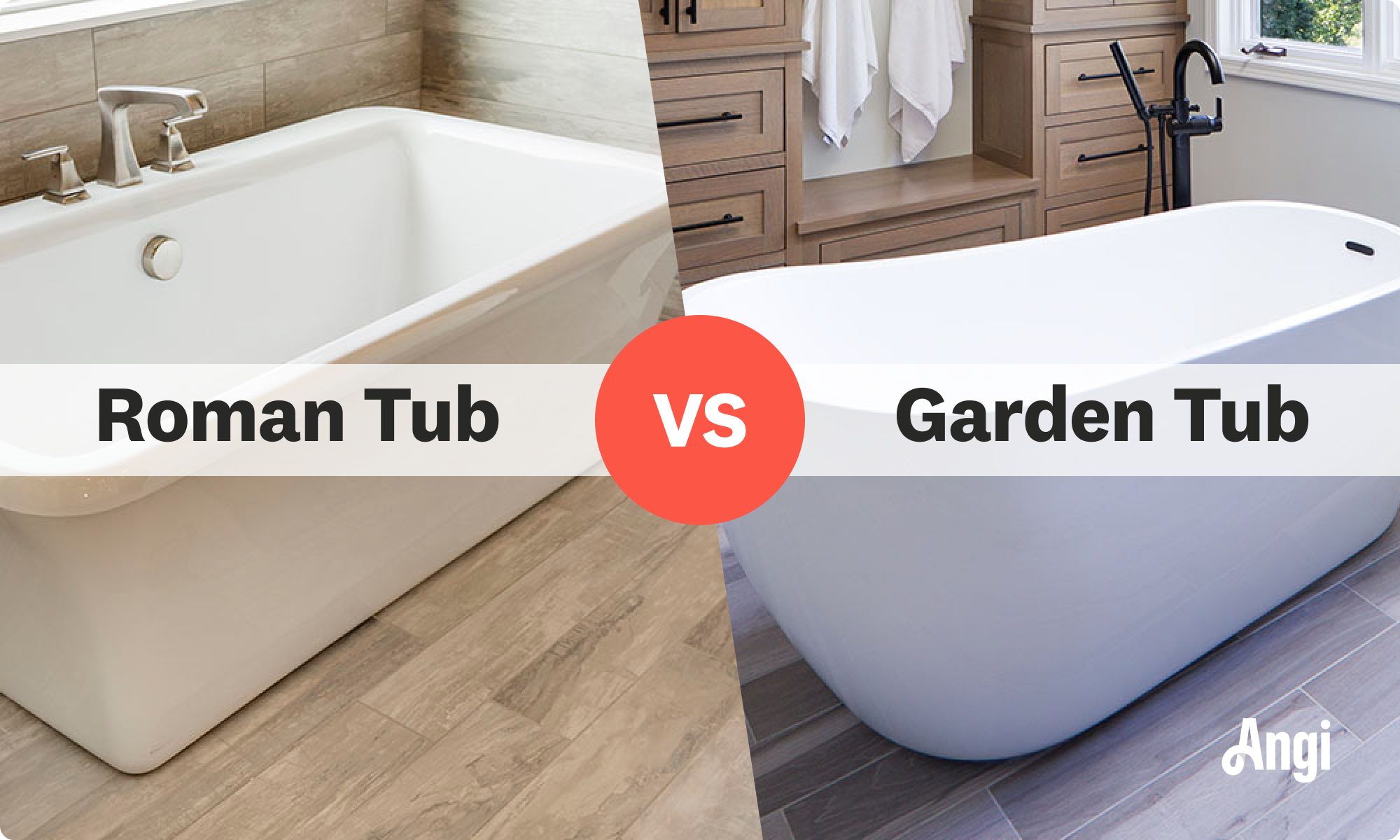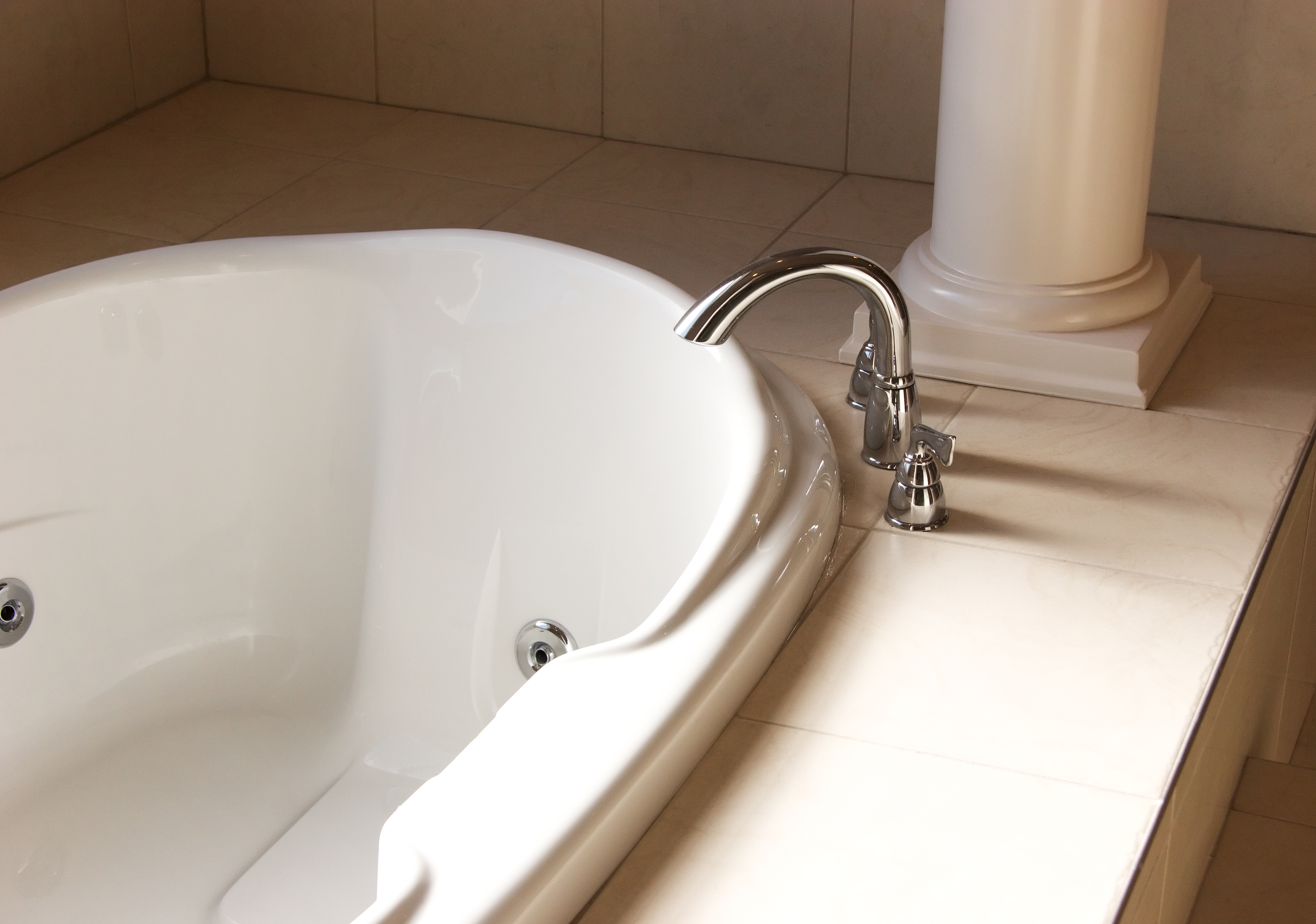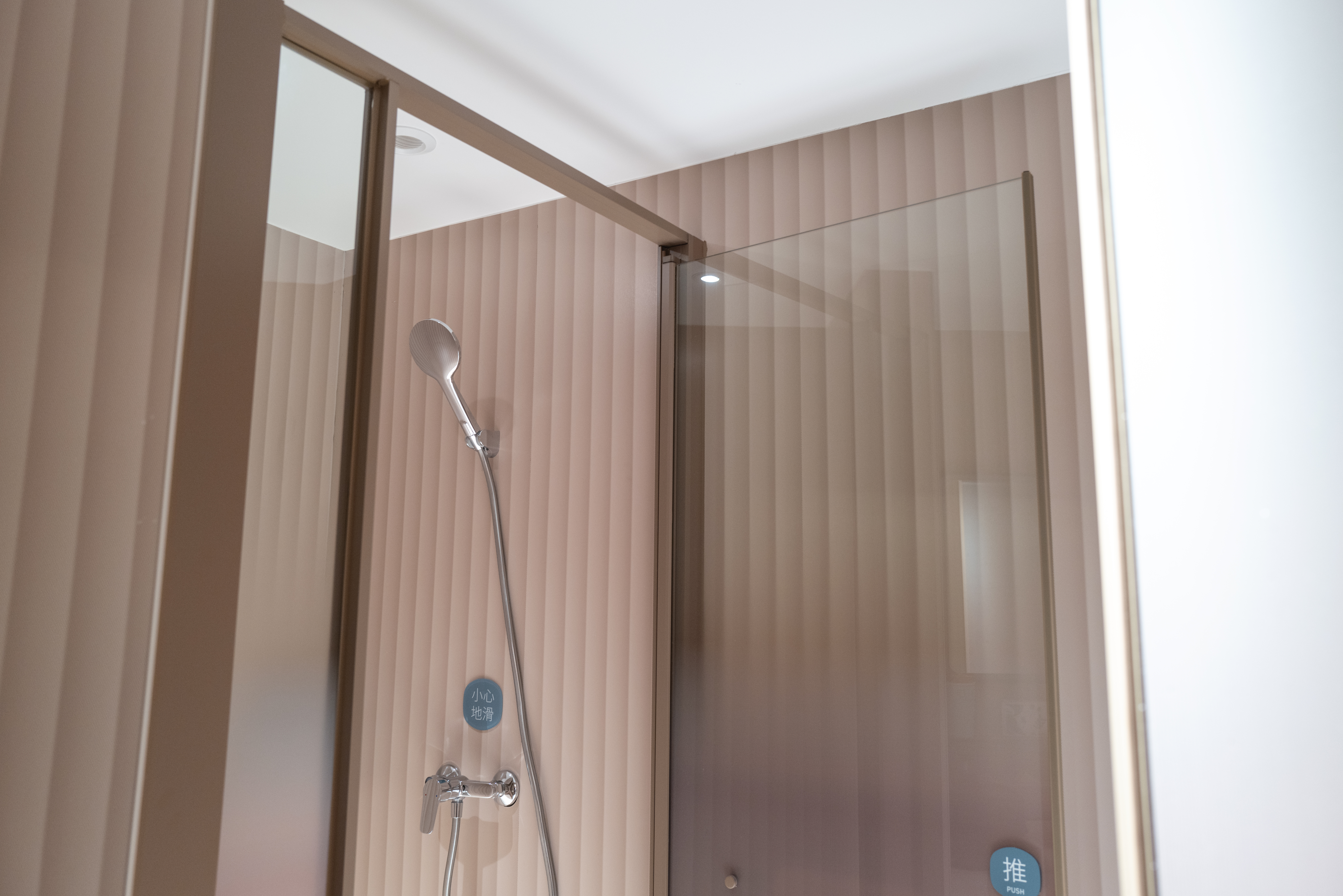
The cost to add a half bathroom varies based on geography and your choice of additions. Read on to discover just what factors into your total project cost.
A Roman tub is a deep, deck-mounted soaking tub for modern luxury


Roman tubs are freestanding, mounted soaking tubs with deck-mounted faucets.
Modeled after Roman baths in ancient times, they offer a spa-like experience.
They’re ideal for large bathrooms with private showers.
Installation is more costly than a normal tub.
Prioritize water usage and available space when considering tubs.
Roman tubs frequently come up in conversations with designers and contractors about what it really means. These elegant, spa-style bathtubs are increasingly popular in upscale bathroom remodels, but they're not as well-known as standard alcove tubs or garden varieties. So what is a Roman tub, exactly? Allow us to introduce you to Roman tubs, their distinctive features, and the luxury they bring to modern bathroom design.
A Roman tub is a large, deep type of bathtub designed for soaking. It is typically installed on a raised deck or tile platform, with a faucet that is deck-mounted rather than wall-mounted. Most Roman tubs feature flat rims and big spouts, allowing for quick filling.
Inspired by ancient Roman bathhouses, these tubs attempt to recreate that relaxed, lounging sensation. Today's Roman tubs are generally oval or rectangular with wide, flat rims. Not many have a shower option, so they're better suited for a house with a separate shower.
Roman tubs and garden tubs are similar. But they vary in their layout, faucet, and design. Here's a quick look.

| Feature | Roman Tub | Garden Tub |
|---|---|---|
| Faucet Placement | Deck-mounted | Freestanding or wall-mounted |
| Tub Design | Rectangular | Oval or round |
| Style Origin | Inspired by Roman bathhouses | Classic and decorative |
| Common Use | Master bathrooms, spa layouts | Traditional or vintage bathrooms |
If your ideal bath has natural light, greenery, and a freestanding tub, a garden tub is a better fit. However, if you prefer sleek lines and an integrated sense of luxury, then a Roman tub would be the more contemporary option.

Roman baths are quite similar to standard bathtubs but have specific installation requirements. Unlike traditional bathtubs, which typically feature a wall-mounted spout, Roman tubs have faucets mounted on the deck or platform surrounding the tub. These faucets are typically wider and designed to support higher water flow rates, allowing them to fill large tubs quickly.
Due to their depth and length, Roman tubs typically hold 50 to 80 gallons of water. Therefore, it is essential to have a water heater that can meet this demand. Overflow drains are placed higher to allow deeper fills. Also, some systems may include handheld sprayers or temperature control valves for added convenience.
Note: Due to the deck installation, you’ll likely need access to the plumbing beneath or behind the tub deck. This requirement makes the initial installation slightly more complex than a typical bath swap.
Spa-like comfort: Roman tubs are designed for soaking, and their depth enables you to soak almost entirely. If you enjoy relaxing with a warm soak, this is where relaxation meets indulgence.
Quick-filling faucets: Roman tub faucets have a high flow rate. They fill faster than standard bathtub taps, eliminating the 20-minute wait to get a nice soak.
Streamlined, built-in style: Since Roman tubs are fitted in a platform, they become part of the room. You get a streamlined, modern look that suits luxury and minimalist settings.
Customization: You can choose the deck material: tile, stone, or wood. Some option includes handheld sprayers, thermostatic valves, or even LED lighting.
Space: Roman tubs aren't ideal for small bathrooms. Due to their depth, width, and platform surrounding them, they occupy more space than most standard tubs.
Water consumption: Roman tubs use more water than standard tubs. A 70-gallon soak can add up quickly, especially if you have a small water heater.
Complex installation: The larger size and deck-mount plumbing result in higher installation costs, requiring a licensed contractor and plumber.
While the Roman tub boasts style and comfort, it comes with trade-offs in terms of space, cost, and functionality.
Installing a Roman tub is not your average weekend DIY project. Due to its platform-type build and quirky faucet placement, it generally requires a team of professionals.
The installation generally involves:
Building or bracing a platform to hold the tub
Routing the pipes up through the deck (not the wall)
Installing the deck-mounted faucet and hardware
Tile or finish off the surrounding platform
As a result, you can expect bathtub installation costs of between $1,000 and $4,000, depending on materials and style. The tub itself will cost you anywhere from $600 to $2,000, with cast-iron or stone resin versions costing more.
A Roman tub might be the perfect addition if:
You have a large primary bathroom: Roman tubs take up space, not just for the tub itself, but for the platform that supports it. If you’re remodeling a spacious en suite and want a dedicated bath area, it’s an elegant choice.
You love long, immersive soaks: The extra depth and comfort make Roman tubs ideal for those who unwind in hot water. If baths are your go-to for stress relief, this style is worth it.
Creating a spa-like bathroom retreat: When paired with heated floors and soft lighting, a Roman tub becomes the centerpiece of a relaxing, high-end home spa.
But skip the Roman tub if:
You have limited space: Smaller bathrooms are better suited to alcove tubs or shower-tub combos that maximize utility without sacrificing floor space.
You prefer quick showers or baths: These immersion tubs are designed for relaxation. If bathing efficiency is the concern of your routine, you will find little use for it.
You have water heater issues: Nobody likes to sit in a half-full lukewarm tub. If buying a new water heater is not an option, this tub might be more trouble than it’s worth.
Do you need installation help? Contact a bathtub installer in your local area.
From average costs to expert advice, get all the answers you need to get your job done.

The cost to add a half bathroom varies based on geography and your choice of additions. Read on to discover just what factors into your total project cost.

The cost to convert a garage to an ADU varies widely depending on many factors, from its size to the features you want to include.

The cost of installing a bathtub or a shower liner depends on the type of tub or shower, size, and features. This guide will show what you can expect to pay for your project.

There are lots of different types of shower door seals to keep your bathroom dry. We’ll show you what they are and where they work best.

Learn how to build a DIY dog wash station to make your pup’s bathtime a less backbreaking job that leaves your family bathroom free from dog hair and dirt.

Small bathroom remodel costs depend on a number of factors—like what exactly you’re upgrading and the size of the room. This guide will help you budget.